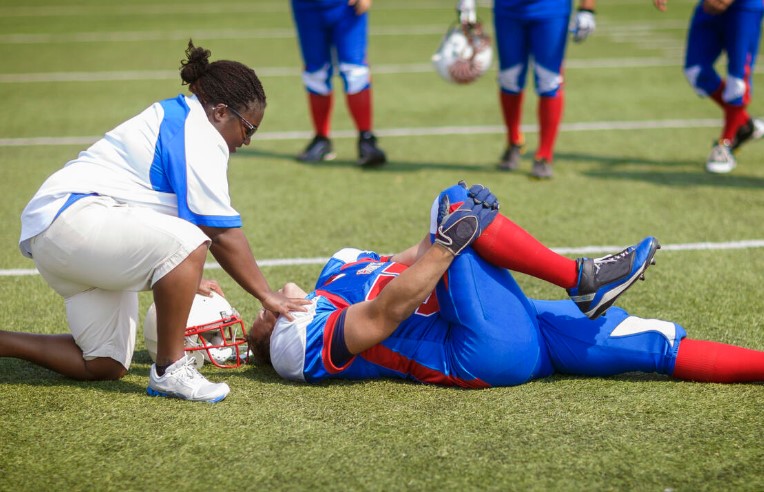Welcome to the dynamic world of athletic training, where professionals play a crucial role in ensuring the health and performance of athletes. In this article, we’ll explore the ins and outs of the athletic trainer job description, shedding light on the educational requirements, day-to-day responsibilities, essential skills, and much more.
Educational Requirements
To embark on a career as an athletic trainer, individuals typically need a bachelor’s degree in athletic training or a related field. Moreover, many aspiring athletic trainers pursue advanced degrees or certifications, specializing in sports medicine to enhance their knowledge and skills.
Job Responsibilities
Athletic trainers wear many hats, from assessing injuries to implementing rehabilitation programs. They collaborate closely with athletes to prevent injuries and provide immediate care in case of emergencies. Additionally, they work hand-in-hand with coaches and healthcare professionals to optimize athletes’ performance and recovery.
Skills and Qualities
Success in athletic training goes beyond technical expertise. Effective communication, teamwork, and empathy are vital. Athletic trainers must be adaptable, as they often deal with unforeseen challenges and varied personalities within a team.
Work Environments
Athletic trainers find employment in diverse settings, including schools, sports teams, and healthcare facilities. Each environment presents unique challenges and rewards. Whether on the field or in a clinical setting, athletic trainers are indispensable contributors to the well-being of athletes.
Certifications and Licensing
To practice as an athletic trainer, professionals need to obtain relevant certifications and licenses. These credentials not only demonstrate competence but also ensure adherence to ethical standards within the field.
Career Progression
The career path of an athletic trainer can evolve in various directions. Opportunities for specialization and advancement exist, providing professionals with the chance to focus on specific sports or transition into managerial roles.
Technology in Athletic Training
Advancements in technology have revolutionized athletic training. From wearable devices to specialized software, athletic trainers leverage cutting-edge tools to assess and monitor athletes, contributing to injury prevention and performance optimization.
Collaboration with Other Health Professionals
In the realm of sports medicine, collaboration is key. Athletic trainers work closely with physicians, physical therapists, and nutritionists to create holistic wellness plans for athletes. This multidisciplinary approach ensures comprehensive care.
Athletic Trainer’s Role in Mental Health
Beyond physical well-being, athletic trainers recognize the importance of mental health in sports. They play a crucial role in supporting athletes emotionally and providing resources to address mental health challenges.
Challenges in the Field
While immensely rewarding, a career in athletic training comes with its share of challenges. Dealing with high-pressure situations, managing diverse personalities, and staying updated with evolving medical practices are some hurdles athletic trainers navigate.
Salary and Job Outlook
The dedication of athletic trainers doesn’t go unnoticed. With an average salary reflecting their expertise, the job outlook for this profession is promising. The demand for qualified athletic trainers continues to grow, especially with increased awareness of the importance of sports safety.
Case Studies
Let’s delve into real-life stories of athletic trainers making significant impacts. From facilitating remarkable recoveries to contributing to championship victories, these case studies exemplify the profound influence athletic trainers wield in the sports arena.
Conclusion
In conclusion, the athletic trainer job description encompasses a multifaceted role that goes beyond physical fitness. Athletic trainers serve as guardians of athletes’ well-being, fostering excellence in sports through a combination of knowledge, skill, and compassion.
FAQs
- How long does it take to become a certified athletic trainer?
The journey to becoming a certified athletic trainer typically involves a four-year bachelor’s degree and additional certification, taking around five to six years. - What are the common challenges faced by athletic trainers?
Athletic trainers often grapple with time constraints, high-pressure situations, and the need to stay abreast of advancements in sports medicine. - Is specialization common in the field of athletic training?
Yes, many athletic trainers choose to specialize in a particular sport or area, tailoring their expertise to specific athletic needs. - How do athletic trainers contribute to mental health in sports?
Athletic trainers offer emotional support, resources, and referrals to help athletes address mental health challenges and maintain overall well-being. - What is the job outlook for athletic trainers in the coming years?
The demand for athletic trainers is expected to grow, with sports safety becoming a priority and the recognition of their crucial role in athlete care.

